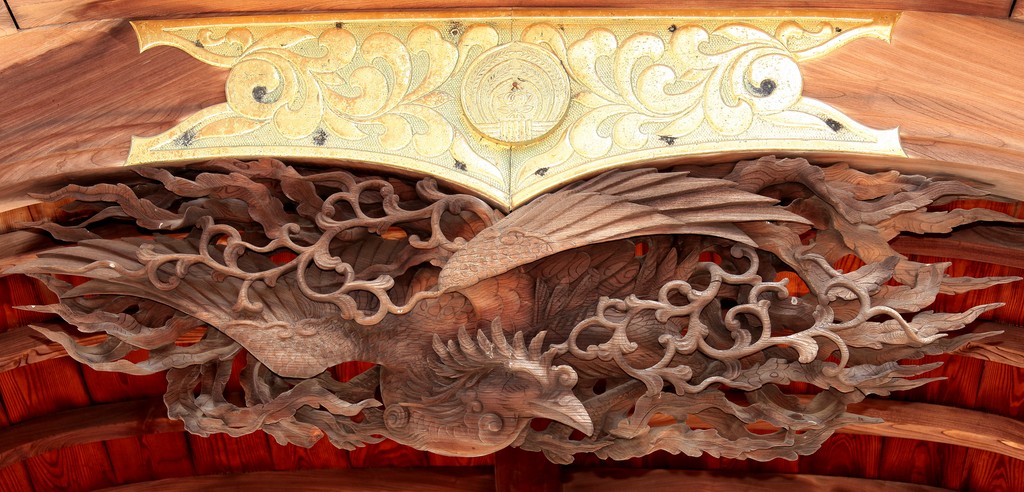SCULPTURE PHOENIX TEMPLE JAPONAIS
Des sculptures en bois ressemblant à un phénix ou phœnix Hi no tori (火の鳥 ou ひのとり) sont habituellement utilisées comme éléments d'architecture. Elles sont placées aux sommets de pilliers sous l'avant-toit des temples bouddhistes et des sanctuaires shintos. Elle représente l'oiseau de feu légendaire qui renaît de ses cendres.
----------------------------------------
Wooden Hō-ō (鳳凰) or Hou-ou, Ho-o, Hoo-oo carvings are commonly used as decorative and protective architectural elements (kibana 木鼻 or decorated beam-ends), placed under the eaves of both Shinto shrines and Buddhist temples to ward off evil spirits. In Japan, as earlier in China, the mythical Phoenix was adopted as a symbol of the imperial household, particularily the empress. This mythical bird represents fire, the sun, justice, obedience, fidelity, and the southern star constellations.
A mythical Chinese bird, thought to have been introduced to Japan in the Asuka period (mid 6th to mid 7th century AD). The phoenix has a bird's beak, a swallow's jaw, and a snake's neck; the front half of its body is thought to resemble a giraffe, the back half a deer. Its back resembles a tortoise, and its tail is like a fish. It is often shown in a paulownia tree (Chinese parasol tree, 梧桐, Aogiri), with bamboo in the background, or surrounded by Chinese arabesque foliage (唐草, "Karakusa").
It became a popular decorative motif in the Nara period (late 7-8c), and was used on a wide variety of items including textiles, mirrors, chests, and lacquerware. Outstanding early examples of phoenix designs can be seen on the ceiling of Hōryūji Kondō Nishi-no-ma, 法隆寺金堂西の間 (late 7c). Hō-ō depicted on the back of mirrors were popular in the Heian period (9-12c). Some of these used a Chinese style, but others Japanized the Hō-ō motif, replacing arabesque foliage with Japanese wild grasses, and changing the bird to resemble a blue magpie (尾長鳥, "Onagadori"), or a crane (鶴, "Tsuru"). A famous pair of Hō-ō statues, made of copper and measuring one metre in height, can be seen on the roof of Byōdō-in Hō-ō-do 平等院鳳凰堂 , Kyoto (10c). Throughout the 13-19c the Hō-ō remained a popular design, particularly on gold and silver lacquered boxes (Jp. = Makie 蒔絵) and for Noh 能 costumes. The original Chinese background of paulownia and bamboo was gradually replaced by combinations of peonies, cherry blossoms, crysanthemums, and seasonal Japanese wild flowers. The phoenix appears on three crests (紋章, "Monshou"), known as hō-ō-maru (鳳凰円, "phoenix circle"), tachi hō-ō (立ち鳳凰, "standing phoenix") and tobi hō-ō (飛び鳳凰,flying phoenix).
